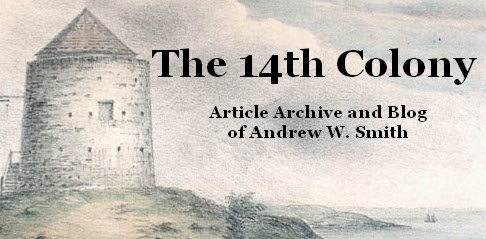December 6, 2007
The new U.S. National Intelligence Estimate on Iran's nuclear development has itself hit like an atomic bomb of sorts.
The NIE's most immediate implication is that U.S. military strikes on Iranian nuclear facilities are not in the offing. Not because the NIE claims Iran will not go nuclear, but because it claims Iran is at least two years away from enriching uranium enough to build a bomb. The military option will only ever be a last resort, and a period of at least two years is outside the "red line" for last resorts.
The 2005 NIE found that Iran could produce enough highly enriched uranium for a weapon "early-to-mid next decade," and "by the end of this decade" at the earliest; the new NIE foresees Iran crossing that weaponization threshold "during the 2010-2015 time frame," with an earliest possible date of "late 2009." So both forecasts agree on timelines, and the nearest point-of-no-return is now only two years out.
The good news is that, if the report is correct, we have a window of opportunity for non-military solutions to the Iran problem.
If the NIE is correct, we need not worry for now about air strikes harming innocents or alienating the pro-Western people of Iran. We need not worry for now about an Iranian retaliation to air strikes, whether upsetting the newfound peace in Iraq, targeting Western soldiers in the region, driving the price of oil even higher, or unleashing terror attacks against Israeli or Western civilians.
And most importantly, if the NIE is correct, we need not worry for now about Iran announcing the detonation of the world's first Islamist nuclear bomb.
The bad news is that National Intelligence Estimates are notoriously faulty. They don't call them "estimates" for nothing.
The catalogue of flawed U.S. intelligence in the past two decades includes the failure to envision the fall of the Soviet Union, the underestimation of Iraq's WMD capabilities before the 1991 Gulf War, the overestimation of those same capabilities before the 2003 Iraq War, and the failure to anticipate the 9/11 attacks and the current global war.
So there is no particular reason, without the benefit of hindsight, to believe that this NIE is some final word in accuracy and analysis. Especially as it neglects Iran's work on heavy water and longer-range ballistic missiles. But, as of now, the new NIE is the best we've got. It is the most current assessment of the U.S. intelligence agencies on the central intelligence question of the time.
The NIE finds that Iran suspended its nuclear program in 2003, and even Israeli officials skeptical of the report agree on that point. 2003 of course coincides with the war to end the Saddam Hussein regime, just across the border from Iran, and largely as a result of Iraq's WMD defiance. President Bush had recently declared Iran part of an "Axis of Evil," along with Iraq, so Iran may have feared that it was next up on the hit list. And Libya was persuaded by Saddam Hussein's example to abandon its WMD program; Iran may have drawn a similar lesson.
But that was 2003. A lot has happened since. Iraq is in hand today, but by the start of this year there was a real possibility of an American withdrawal and defeat there. If American victory in Iraq deterred WMD development, then the prospect of American defeat was presumably having the opposite effect, and by 2005, Iran had resumed its uranium enrichment.
Bizarrely, the NIE credits "international scrutiny and pressure" for Iran's nuclear freeze in fall, 2003, but there had been no such international efforts by the fall of '03. What there had been was the recent example of regime-change in Iraq.
The NIE also finds that Iran has not restarted its nuclear weapons program since 2003, and it is on this point that the Israelis, the NIE's critics, and the 2005 NIE, disagree. The Iranians themselves boast that they are enriching uranium in thousands of centrifuges -- as would be necessary for building a bomb -- and the NIE does not disagree, except to claim that the enrichment is going slowly. So the finding that Iran's "nuclear weapons program" has been halted, but that its uranium enrichment continues, may be splitting hairs. The uranium enrichment would be the biggest part of a weapons program.
The report of slow progress on Iran's nuclear development has been readily received as a defeat for the United States or the Bush Administration. But U.S. and Administration policy is that Iran must not have nuclear weapons. In any less poisonous political environment, a finding that the policy is being realized might even be treated as a small victory, if not a new vindication of the Iraq intervention.
The danger of the NIE is that it will be abused by the Iran appeasers as proof the Islamic Republic is as pure as the driven snow, and give them an excuse for dropping the diplomatic pressure on Iran, let alone even the feeblest threat of military action. The NIE confirms that Iran continues enriching uranium, which is the stuff nuclear weapons are made of, and predicts Iran could have the bomb in as little as two years. But the NIE also allows that the West has time -- not to carry on as usual, but to prevent Iran from becoming a nuclear Islamist theocracy, by non-military means. If we do not use this time to halt Iran's nuclear drive diplomatically, we will sooner or later be back to bracing for the military option.
Published in The Chronicle-Herald, Halifax, Nova Scotia
Andrew Smith / Andrew W. Smith, Tulsa, Oklahoma and Cape Sable Island, Nova Scotia
December 21, 2007
Subscribe to:
Posts (Atom)

